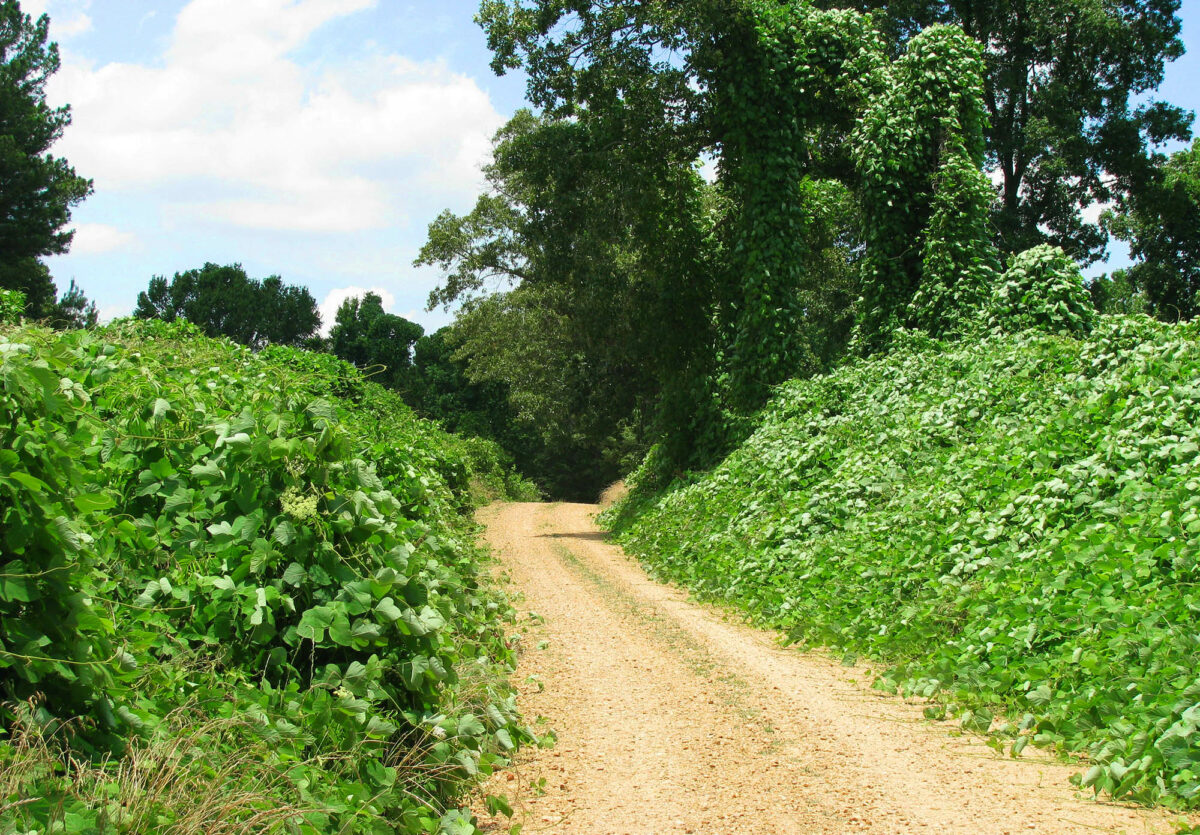People call kudzu the vine that ate the South. Native to China and Japan, the vine embarked on its infamous, invasive journey when it was introduced to the United States in the 1800s. Radio hosts spread wild claims about the plant, calling it a “miracle vine” for the South. Once welcomed into hot, humid southern habitats, kudzu took on a life of its own. To this day, the vine can be found covering everything from trees to telephone poles.
As an invasive plant, kudzu presents issues for the environment. The plant’s rapid growth hides the South’s natural landscapes and can lead to a loss of biodiversity. Additionally, as naturalist Bill Finch wrote for Smithsonian Magazine, kudzu’s infamy “veils more serious threats to the countryside, like suburban sprawl, or more destructive invasive plants such as the dense and aggressive cogon grass and the shrubby privet.”
All factors considered, kudzu earns its bad reputation. Still, this troublesome vine holds a special place in many Southerners’ hearts. With creeping green tendrils and leaves that soften the edges of any form it grows around, kudzu lends its environment a strange, surreal look. Before the South finds a way to banish this invasive plant for good, take a minute to appreciate the unique landscapes touched by kudzu.
[vertical-gallery id=649]
